Review
VW’s flagship is a likeable car with plenty of space and an impressive specification for the money. Compared to rivals it’s not the most cost-effective company car in its segment, however.
Overview
The Touareg occupies a unique place in the luxury SUV market, facing competition from premium-badge rivals such as the BMW X5 and Mercedes GLE.
As VW’s flagship, it’s the most expensive model in the line-up with prices starting at £68,065 and rising to more than £80,000.
The car was facelifted in late 2023, bringing some visual tweaks to the outside and an higher specification and more technology inside.
The most notable change can be seen at night, with new light bars and an illuminated rear VW badge. There’s also a new front grille to give the Touareg a more intimidating stance.
Three models are available, starting with the Elegance. It comes with a plug-in hybrid engine only. Then there’s Black Edition, offered with a petrol or diesel engine. Finally, the Touareg R is also a plug-in hybrid but comes with more power and sportier styling.
Comfort and practicality
When you step inside the Touareg you realise how massive it is. The car is 4.9 metres long and almost 2.0 metres wide. As a result, it has a large and spacious interior.
There’s a large gap between the two front seats, occupied by a beefy armrest, and the dashboard doesn’t protrude too far into the cabin, giving a more airy feel.
The inside isn’t as plush as a BMW or Mercedes, there’s still quite a lot of plastic. But improvements have been made as part of the facelift, so some of the materials used higher up are softer and more premium in feel.
Equally spacious in the rear, the Touareg would be fit for carrying five adults over a long distance with no fuss. It also has a massive boot, providing 810 litres of luggage space, or 655 litres in the plug-in hybrid models.
The three rear seats can be folded individually, to aid carry capacity. There’s also a large array of storage bins around the cabin.
Safety and technology
One of the key changes for the new Touareg is the standard fitment of VW’s ‘Innovision Cockpit’. This pairs a giant 15-inch central infotainment screen with a second digital instrument cluster display.
The majority of the dashboard is occupied by the screen, which incorporates the climate controls. There’s a small selection of buttons on the centre console, including a handy roller for the audio volume.
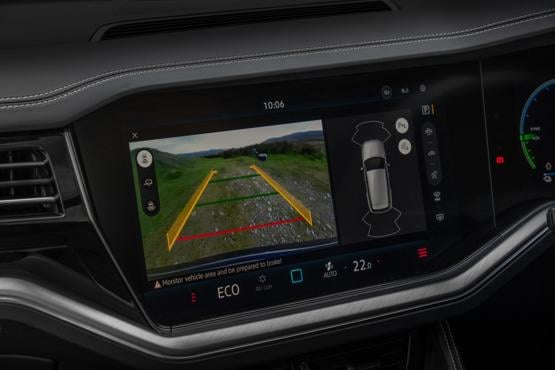
To the right of the main screen there’s a column of quick access touch controls to enable fast access to key features.
Of all the digitally-dominated dashboards, the Touareg’s is one of the easiest to get on with.
The standard equipment list includes keyless entry, matrix LED headlights, heated front seats, a reversing camera and a panoramic sunroof.
You also get adaptive cruise control with travel assist, lane keeping aid and front and rear parking sensors.
Driveability and efficiency
The Touareg eHybrid uses a 3.0-litre V6 petrol engine and an electric motor powered by a 14.3kWh battery. Unusually for a plug-in hybrid, the car’s CO2 emissions figure is above 50g/km, therefore it does not qualify for the lowest benefit-in-kind (BiK) tax bands. The official electric range is 31 miles, although we were achieving around 25 in our test.
Power output is 381PS, but at almost 2.5 tonnes the car doesn’t feel exceptionally rapid. It can accelerate from 0-62mph in just under six seconds. With a limited electric range and a big petrol V6, fuel consumption is around 30mpg in mixed driving.
The Touareg R uses the same powertrain but has a more potent power output of 462PS.
Other engine options include a 3.0-litre petrol and two 3.0-litre diesels. All of these sit in the maximum BiK band.
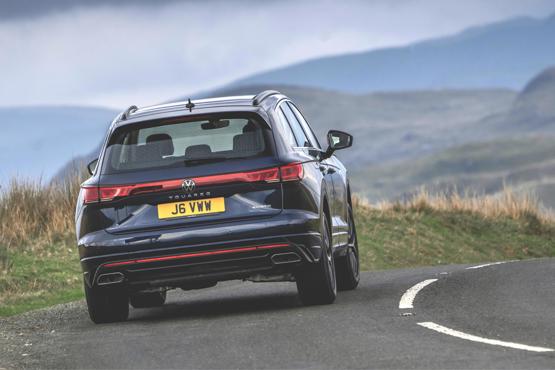
The Touareg’s road manners are geared towards comfort. The Elegance model rides on conventional steel spring suspension, while the Black Edition and R both ride on air springs.
In either setup, the Touareg feels like a big SUV to drive. Agility is improved on models with air suspension and the optional rear-wheel steering. The car is most at home on the motorway, where it feels stable and comfortable.
Refinement and noise levels are relatively low, providing a relaxed drive.
Company car tax and running costs
The Touareg eHybrid makes the most sense for fleets and its lower price point means that its more accessible to drivers than an equivalent BMW X5 or Mercedes.
However, a fully electric SUV like the Genesis Electrified GV70 would be considerably cheaper for both driver and business.
Owing to its higher CO2 emissions, the plug-in model still attracts 15% BiK. While this is much less than the diesel or petrol, it will cost 40% taxpayers almost £350 a month while the X5 xDrive50e would be just £215.
Matt has been an automotive journalist for nine years and has driven just about every new car and van that's on sale. As content editor - vehicles he is responsible for the automotive content on Fleet News and also contributes to Automotive Management. Prior to this, Matt worked in the automotive industry for 10 years.


Specs
| Manufacturer | Volkswagen |
| Model | |
| Specification | Volkswagen Touareg Estate 3.0 TSI eHybrid 4Motion Elegance 5dr Tip Auto |
| Model Year | 2026.00 |
| Annual VED (Road tax) | £130 |
| BIK List Price | £71,205 |
| Range | 29.00mile(s) |
| CO2 | 57g/km |
| BIK Percentage | 17% |
| Insurance Group | N/A |
| CC | 2,995 |
| Fuel Type | |
| Vehicle Type | Large SUV |
| Luggage capacity (Seats up) | 665litres |
| Doors | 5 |
Running Costs
| P11D | £71,205 |
| Cost per mile | 87.64ppm |
| Residual value | £27,000 |
| Insurance group | N/A |
| Fuel Type | |
| Cost per mile | 309.41ppm |
| Fuel | 4.95ppm |
| Depreciation | 300.35ppm |
| Service maintenance and repair | 4.11ppm |
Info at a glance
-
P11D Price
£71,205
-
MPG
127.5 (WLTP) -
CO2 Emissions
57g/km -
BIK %
17% -
Running cost
3 Year 60k : £27,000 4 Year 80k : £22,000 -
Fuel Type
-
Range
29.00mile(s)



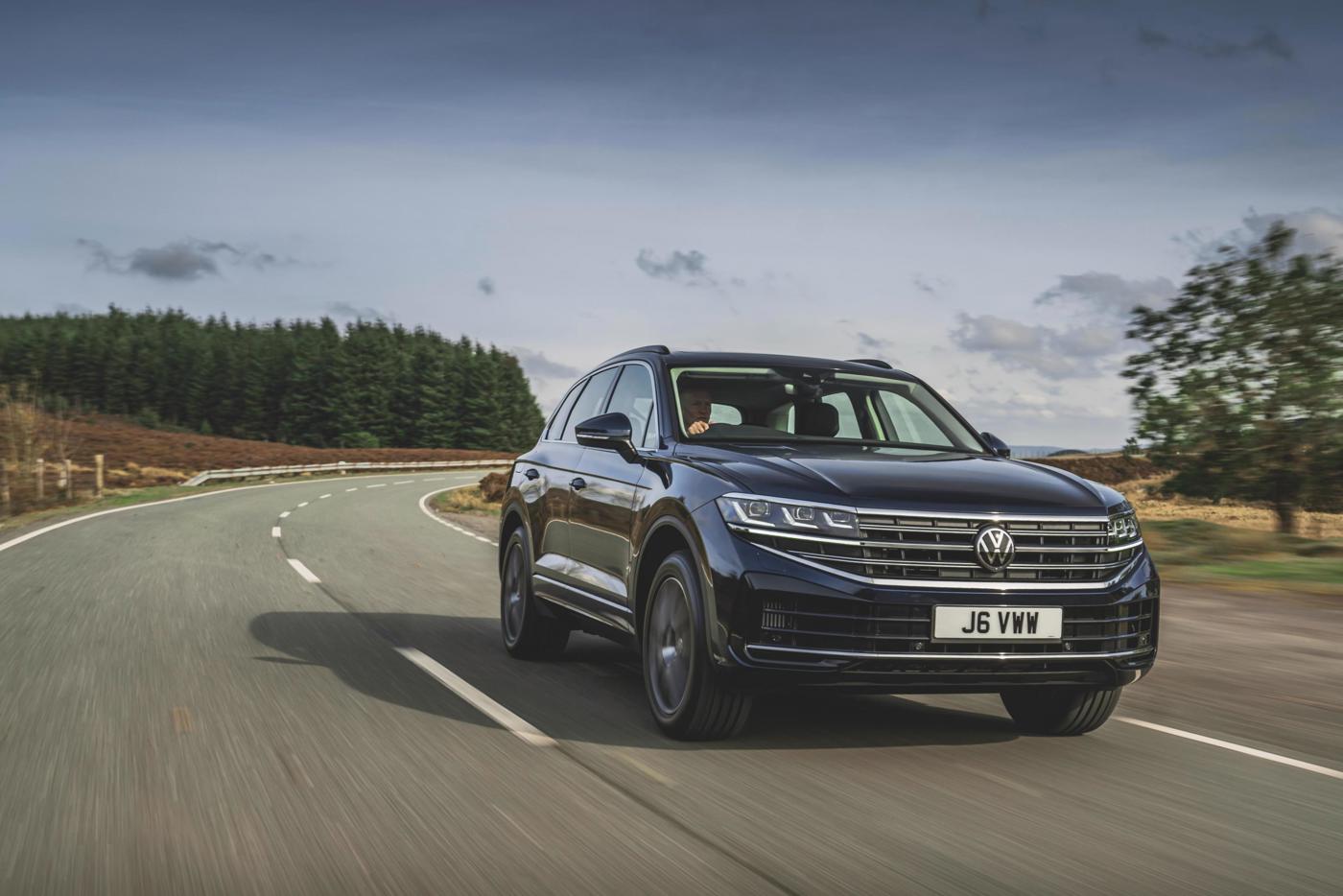


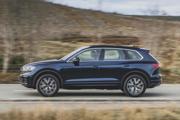
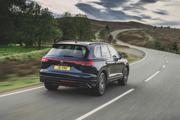
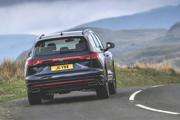

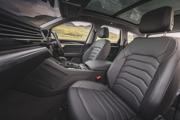

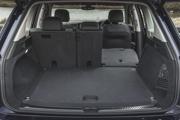
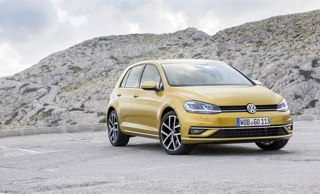


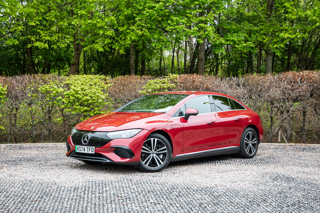






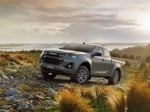






Login to comment
Comments
No comments have been made yet.